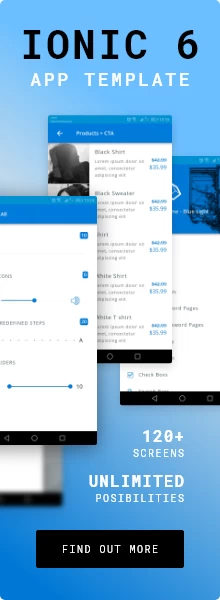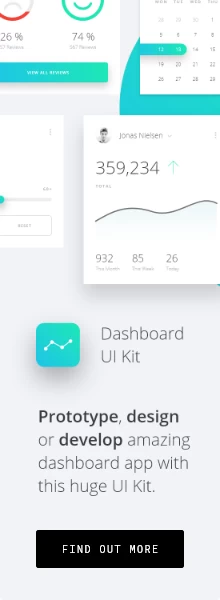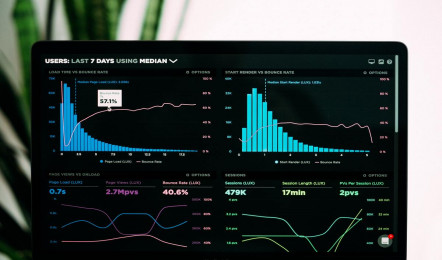Flutter vs Ionic - Which One Fits Your Needs
Wed.03.08.2022 BYYou need a sizable user base if you want to dominate your industry in today's tech world. You must create cross-platform apps that function flawlessly on both iOS and Android if you want to attract a wider user base. The two most popular frameworks for creating high-performing cross-platform apps nowadays are Ionic and Flutter. If you believe that the major cross-platform app development frameworks' functioning methods would be quite comparable, you are gravely incorrect. Despite sharing the same objective of creating high-performing programs, these frameworks are fundamentally unique. Everyone has been curious about how Flutter 1.0 compares to Ionic and which platform will be ideal for developers ever since Flutter 1.0 was announced in 2018. To assist the businesses in making the right decision, we have examined both the outlines and the SDKs in further detail in this post. Let's begin!
TL;DR
The goal of Ionic and Flutter is to build stunning, powerful apps that run on every device. Our fundamental worldviews, though, could hardly be more unlike.
The usage of the web platform and the adoption of open standards are the driving principles of Ionic. Using a framework created to give excellent performance on mobile, desktop, and mainly online, Ionic allows you to understand and use the tools and languages of the web. Flutter, on the other hand, has made the decision to go out on its own, developing a closed environment that is incompatible with the common languages, toolkits, and standards used in the larger hybrid app development community. Despite having excellent performance on mobile, Flutter is a bad candidate for web-based deployments due to the inherent flaws in its design. Your decision about a solution should be influenced by your alignment with a certain philosophy, the location and method of app deployment, as well as your current knowledge and desired future learning.
What is Flutter?
The open-source framework Flutter uses Google's Dart programming language to carry out its operations. It is frequently referred to as an improved UI toolkit that is used to create cross-platform software from a single codebase. It makes it possible to create expressive and adaptable user interfaces with native performance. Additionally, the whole flutter community as well as a group of Google developers support and contribute to it.
What is Ionic?
Ionic is a UI toolkit and open-source framework. With HTML, CSS, and JavaScript, high-performing desktop and mobile apps may be created. Ionic's goal is to enhance the front-end user experience. Ionic has been formally integrated with both React and Angular. Vue.JS is also supported.
Ionic facilitates the development of Progressive Web Applications and Hybrid Apps on the native platform.
Standard web technologies like HTML, CSS, and JavaScript are the foundation of Ionic.
inspires elegant UI designs with a simple foundation.
MIT license and open-source.
Similar to Angular, Ionic is interoperable with the majority of frameworks, including React, Vue, and others.
International communities support the Ionic ecosystem.
Enter the Ionic community:
Forum: A fantastic resource for exchanging ideas and asking questions about Ionic
Ionic developers may communicate in real-time by using Slack.
Twitter: Share community content and Ionic-related information.
GitHub: File bug reports or ask for additional features
What’s Flutter Used For?
MVP mobile applications
Reactive apps with extensive data integration
Apps with material design
Flexible user interface with high-level widgets
Apps that function with operating system-level features
High-performance apps with Skia rendering engine
Advanced operating system plugins with simple logic
What Is the Use of Ionic?
Hybrid app creation
Creation of efficient UI and UX applications
MVC apps for mobile
Applications with hardware support
Native wrapper for cross-platform app development
Flutter Statistics
Worldwide, 39% of people use Flutter to create cross-platform mobile applications. (Data from Statista)
68.8 percent of the emerging community adores Flutter. (Referring to StackOverflow)
Because of the popularity of its libraries and tools, 7.2% of the community chose Flutter.
Ionic Statistics
Ionic is preferred by 86% of developers for mobile development.
The Ionic framework is used to generate about 5 million applications.
The performance of Flutter is one of the features that attract developers' praise. This appears to be where their investment in proprietary, non-standard technology has paid off, and we have to admit that it makes for some snappy demos.
Here are a few things to take into account:
First, Flutter could be a better option if you want to create forceful animations. However, you could choose to just use the native SDKs in that case. However, if you're developing for a more typical consumer app or employee-facing use case, Ionic will frequently provide you with the same performance. The best course of action is to create test apps for both platforms that correspond to your use case and compare them. Just remember that performance is virtually always determined by how your code is written, not by the platform or framework you use.
Second, pay close attention to bundle size since it will play a significant role in how your software is delivered over the web. Since Ionic uses the normal browser runtime and primitives, as was already said, the app size is often quite minimal. Because you're exporting all of that runtime even though the browser already has primitives accessible for practically all of it, Flutter takes a significant amount of code for relatively simple apps (1MB for the NYT demo they delivered). Therefore, given the existing performance benchmarks for Flutter on the web, it will be extremely difficult to meet Google's performance goals for Progressive Web Apps (PWAs) or to rank highly in search-engine results pages.
Ionic vs. Flutter: Code portability
Both Ionic and Flutter look to be competitive when it comes to distributing your app across mobile and desktop platforms. Early examples of Flutter demonstrate that beautiful iOS and Android apps may be produced from a single codebase. Additionally, the samples we've seen demonstrate that you can build your app to run natively on a variety of desktop platforms even if their desktop support is still in technical preview.
You need to decide whether you want to release your app as a PWA or a standard desktop web app on the web. In addition to their extremely proprietary approach limiting the number of web libraries you can use, Flutter's web implementation has intrinsic restrictions (discussed in the Performance section above) that make it unlikely to ever work for apps that demand quick load times and snappy performance. We believe it is fair to give Ionic the edge when it comes to targeting mobile, desktop, and online because it is totally based on web standards and built on the web.
Providing the greatest user experience using Flutter
With streamlined tools, features, and even personalized widgets, Flutter provides a comprehensive user experience. There are no restrictions on how you may personalize your user interface once you grasp FutureBuilder, StreamBuilder, and AnimationBuilder. Dart has a feature called generational garbage collection that aids in the creation of UI frames for perhaps transient object codes. By allocating objects within a single pointer bump, Dart's functionality prevents UI clutter, garbage, and shutter of animation latency while the application is being developed.
The ability of Ionic to provide the greatest user experience
For both iOS and Android applications, Ionic provides a rich, seamless in-app experience that enables persistent and transient UI navigation that closely resembles native navigation. Its hybrid strategy does away with the requirement to upload an updated version to the app stores. As a result, features may be quickly developed and added to native mobile apps, which can then provide real-time updates to users' devices. Users also don't need to download the app apk again to get fresh upgrades.
Conclusion
When comparing Ionic vs Flutter, businesses should truly focus on the final product they want to create before choosing a framework. Do you have lightweight software with several moving images and a complex user interface? Select Ionic. Flutter will probably be useful for heavier apps where flawless backend access is important. But whatever of your position on the Flutter vs. Ionic argument, using the experience of understaffed professionals can help move things along.




